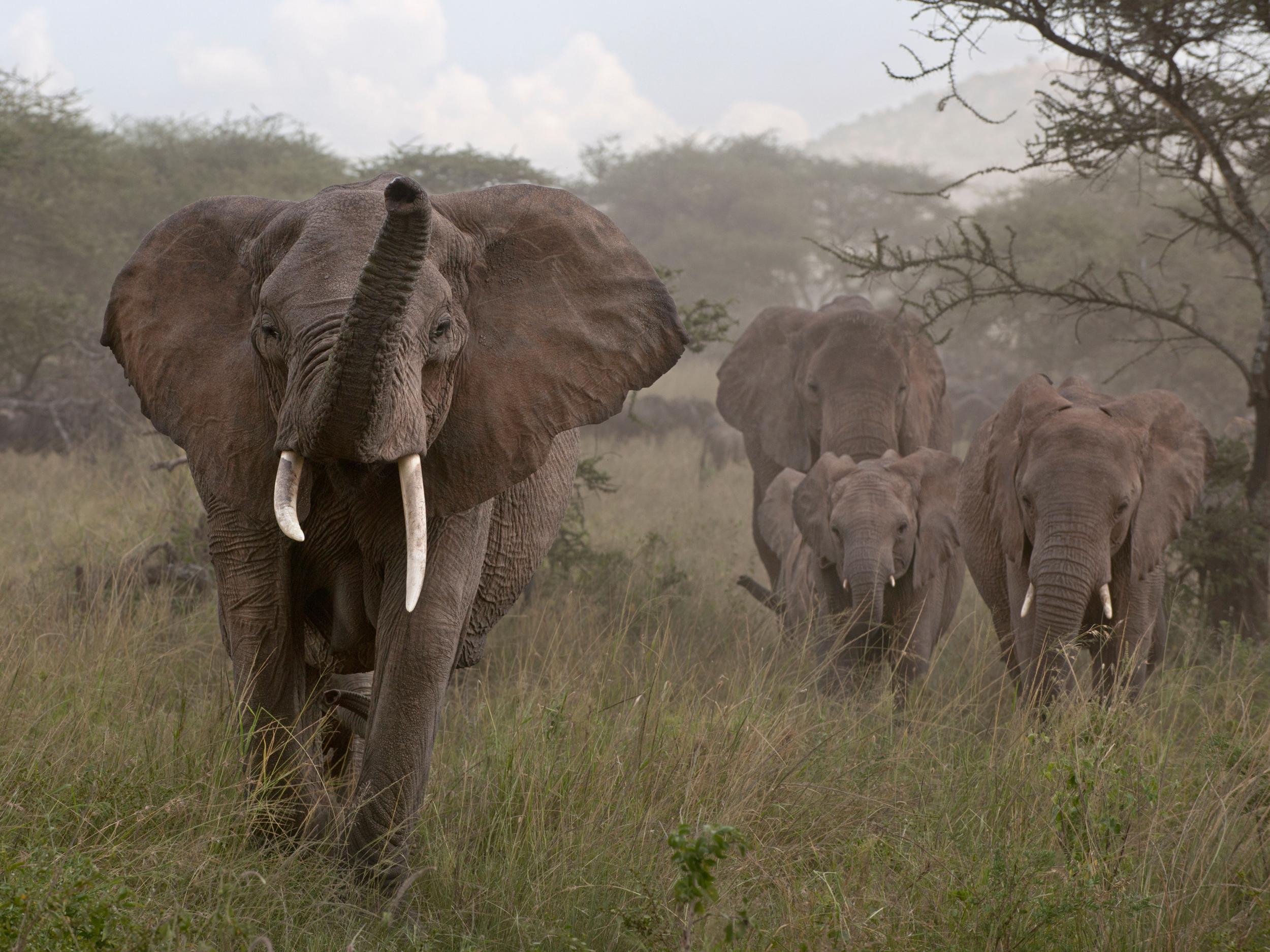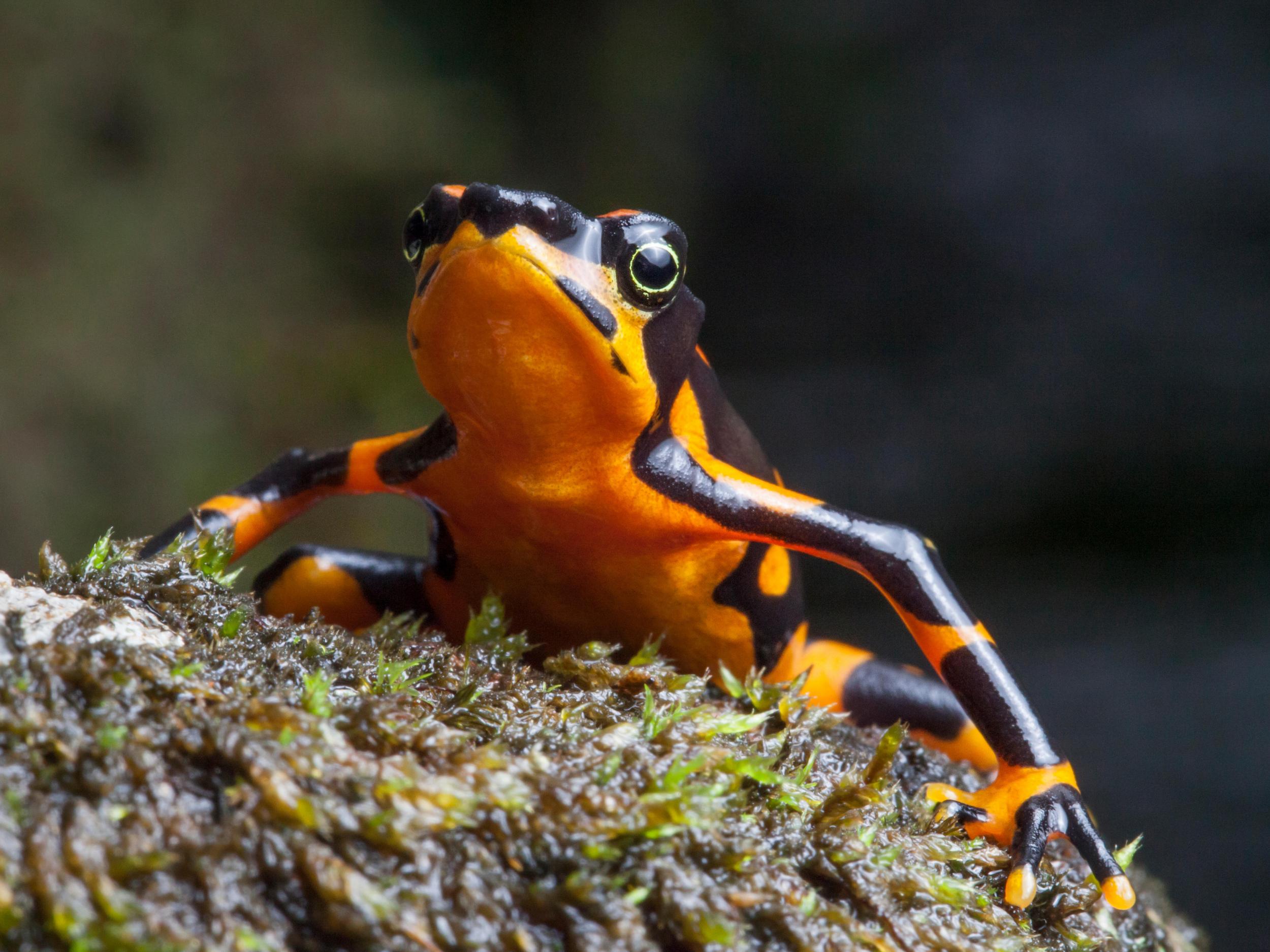Science news in brief: A new way to track elephants and origins of the frog-killing fungus
And a roundup of other stories from around the world

With a trunk that produces 110 decibel blasts, elephants are well-equipped for long-distance communication. But it turns out they may be letting their feet do some of the talking.
Researchers have found that different elephant activities create distinct “seismic signatures” in the ground. According to a recent study in the journal Current Biology, these vibrations travel farther through the ground than they could through the air.
It presents a new opportunity for conservationists looking to survey the animals at a distance. Despite international efforts to ban the trade of ivory dating back decades, tens of thousands of African elephants continue to be killed for their tusks every year.
A feathered terror is slaughtering bats
The greater noctule is the largest bat in Europe, commonly finding shelter in the hollows of trees at Maria Luisa Park in Seville, Spain. Listed as “vulnerable” on the threatened species list, a few years ago they started to turn up dead.
The culprit turned out to be another park inhabitant: rose-ringed parakeets who also make their homes in tree hollows. Now there are thousands of birds, and they are pushing the bats out of their holes, killing some, and taking over the trees where noctules once lived.
In a new paper in Royal Society Open Science, researchers suggest that unless something is done about the parakeets, noctules are likely to be obliterated in the near future.
Frog-killing fungus has Korean origins
In the 1970s and 1980s, frogs seemed to be disappearing overnight. Researchers determined the culprit was a deadly disease called chytridiomycosis, caused by the chytrid fungus. It is thought to have wiped out a third of all frog species.
Scientists have compared the genomes of 177 samples of the fungus from six continents. They determined that the pathogen most likely arose on the Korean Peninsula 50 to 100 years ago and spread through global trade.

Their research, published recently in the journal Science suggests that new variations of the fungus can still develop and spread disease without proper protections. Frogs are important for biodiversity, insect and disease control and may even be sources of new types of medicine.
An asteroid strayed from its companions
At first, the astronomers thought it was a mistake. The newly discovered space rock, which they named 2004 EW95, was something the scientists would expect to see in between Mars and Jupiter. Instead, it was dancing near Neptune.
Their finding suggests that 2004 EW95 is the first of a new class of space objects lurking in the outer solar system, in a vast, frigid region known as the Kuiper belt. Researchers believe the asteroid slingshotted from the inner solar system 4.5 billion years ago, and it may provide insight into the early formation of our planets.
A research team at Queen’s University Belfast in Northern Ireland found that the asteroid’s chemistry was dominated by compounds called ferric oxides and phyllosilicates, which had never been seen before on Kuiper Belt objects.
Alan Turing’s insights just keep on giving

Many have heard of Alan Turing, the mathematician and logician who invented modern computing in 1935.
But few have heard of Turing, the naturalist who explained patterns in nature with math.
Recently, in a paper published recently in Science, chemical engineers in China used pattern generation described by Turing to explain a more efficient process for water desalination, which is increasingly being used to provide freshwater for drinking and irrigation in arid places.
By creating three-dimensional Turing patterns like bubbles and tubes in membranes, researchers increased their permeability, creating filters that could better separate salt from water than traditional ones – which means less energy and lower cost if used for large scale desalination operations.
© New York Times
Join our commenting forum
Join thought-provoking conversations, follow other Independent readers and see their replies
Comments